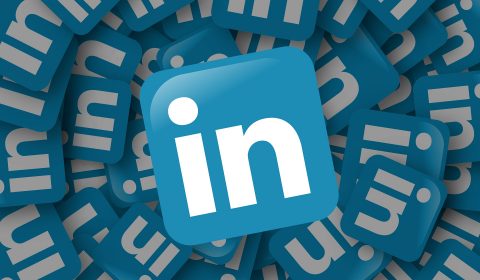More than a few times I have sent a coworker or acquaintance a link to a video on LinkedIn only to hear, ‘I do not have LinkedIn’. When I inquire as to the reason, the response is some variation of ‘I am not looking for a job so I do not need it’. Linked in is used to connect with hiring managers and recruiters but is also a way to network and connect with others in your industry. Keeping on top of industry news, managing professional contacts, and using the profile to build you personal brand are invaluable features of LinkedIn.
Spring has sprung and graduation is around the corner. Let’s look at the value of not only having a LinkedIn profile, but whether it should be different than your resume. The answer is a clear Yes, your LinkedIn profile and resume should not be identical. Each of these is a tool. Each of these has a different mission, purpose, and audience. Because of this each should be tailored to suit their purposes.
LinkedIn Profile
When you have a LinkedIn profile you are online and searchable. Recruiters search for candidates online through sites such as LinkedIn often before posing a position on a job board or database. When used this way, linked in does function as your resume but is more casual. You have the opportunity to use adjectives you may not include in your resume and to include nonwork-related certifications. This personal information can help a recruiter connect with you on a personal level to evaluate whether you will fit the culture at the hiring company.
The first impression. Often the LinkedIn profile is the first thing a recruiter or employer sees. If your profile is outdated or contains inaccurate information, it may lead to a bad impression. LinkedIn Profiles allow you to create a visual brand for yourself. Be sure to include the following to make your profile visually appealing and brand yourself:
- Profile picture: Choose a picture which shows you from the shoulders up in a neutral or office background. This should not be in selfie style.
- Banner Image: The banner image is a rectangle bar which appears at the top of your profile. The profile picture overlaps the banner. This author uses a cropped image from the cover page of the company’s user guides. It is colorful, graphical, and contains the company name, logo, web address, and physical address.
- Summary: The summary section allows you to convey who you are and what you want to do. This is more than what you can do for a company, this is your passion for your industry.
- Text Symbols: Symbols such as a lightning bolt, music note, pen, or keyboard to name a few can be added to your headline, summary, or anywhere else in your profile where you want to stand out. This may not be for everyone but used sparingly can be an eye catcher. See Symbols to spice up your LinkedIn profile for a larger list of symbols and how to add them.
Resume
Resumes may be emailed, mailed, exchanged during an interview or uploaded to a Human Recourses Information System (HRIS). These are physical documents which are formal and their delivery is usually targeted toward a specific job or recruiter. The story for each job or task is conveyed with minimal words in a few lines. STAR (Situation, Task, Action, Result) bulleted points are fairly standard.
While you will have one LinkedIn profile, you may have multiple resumes. It is necessary to tailor resumes to specific job titles or industries. Each resume lists what you have done which qualifies you for the position you are applying for. LinkedIn profiles are what you are doing now and what you are looking toward in the future.
Images and branding are not included in a resume. The more plain-text a resume is the easier it can be imported to a HRIS. At the intersection of Human resources and information technology lies HRIS. One feature of these systems is for job applicants to upload their resume to a resume parser. The system identifies the parts and puts the information into a standard format specified by the company. This helps the recruiter evaluate candidates by putting each individual resume into the same format. The recruiter can focus on the content of the resume without struggling to figure out the layout. Resume’s with tabs or those organized by job role may not import easily leaving the applicant with a lot of manual entry into the HRIS.
How Different
How different your LinkedIn profile is from your resume is a matter of debate. Both should serve their purpose and audience, but you must be comfortable with how each portrays you and your skill set. Be clear in your choices and be able to speak to the differences of the profile and resume. A recruiter may ask you to explain the differences between the two. Having you explain your choices can help them evaluate how you think and whether your thought process makes you a better fit for the position.
Resources:
https://www.topresume.com/career-advice/why-linkedin-is-important
https://fremont.edu/why-building-your-linkedin-profile-is-so-important/
https://www.linkedin.com/pulse/20140423001152-22901019-symbols-to-spice-up-your-linkedin-profile/





